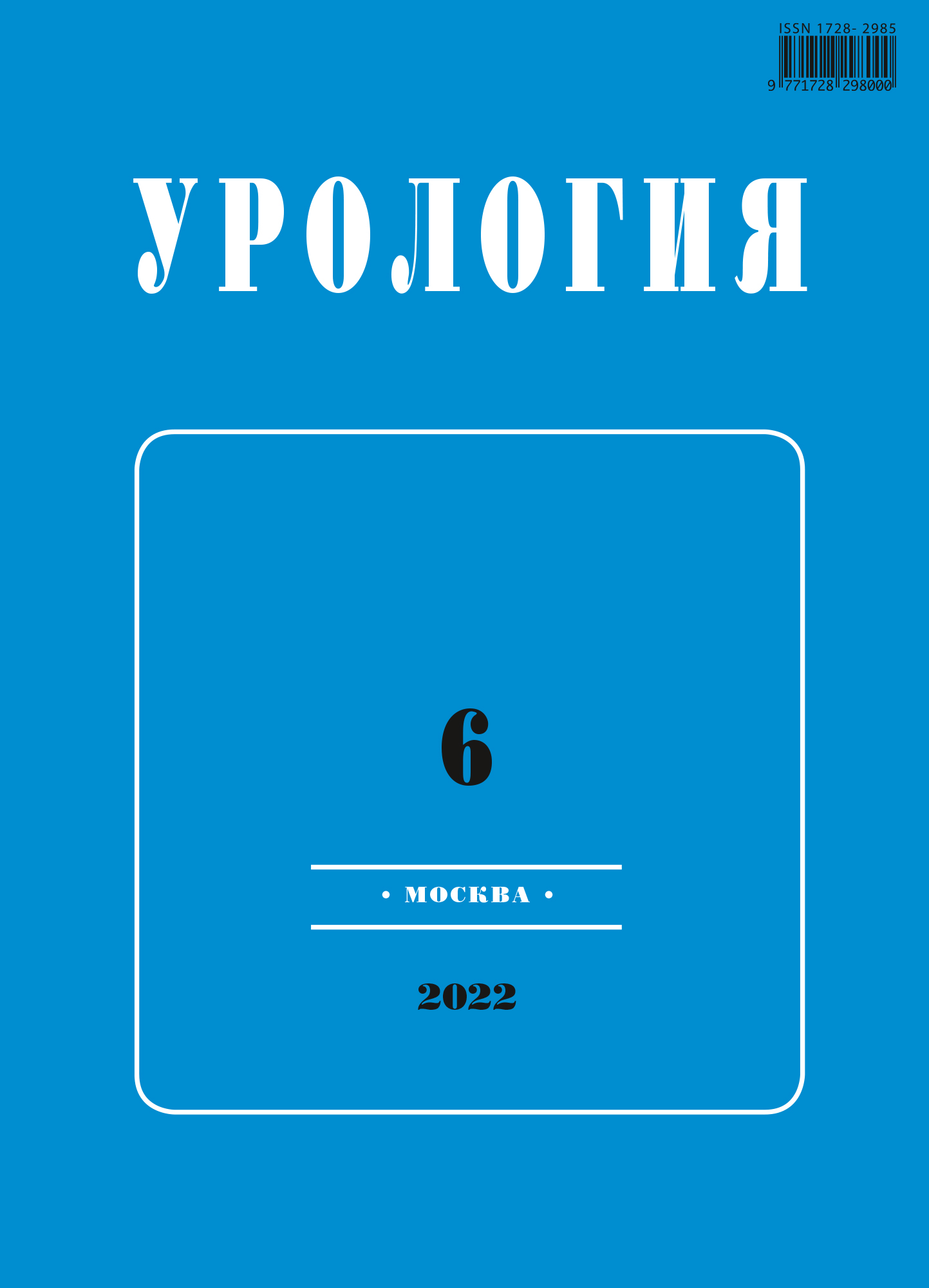Asymptomatic bacteriuria in pregnant women - the normal condition of healthy women urine
- 作者: Kogan M.I1, Naboka Y.L1, Gudima I.A1, Vorob’yeva N.V1
-
隶属关系:
- Rostov State Medical University
- 期: 编号 6 (2022)
- 页面: 5-8
- 栏目: Articles
- ##submission.datePublished##: 15.12.2022
- URL: https://journals.eco-vector.com/1728-2985/article/view/277060
- DOI: https://doi.org/10.18565/urology.2022.6.5-8
- ID: 277060
如何引用文章
详细
全文:
作者简介
M. Kogan
Rostov State Medical University
Email: dept_kogan@mail.ru
Dr. Sci. (Med.), Professor, head of Department of Urology Rostov-on-Don, Russia
Yu. Naboka
Rostov State Medical University
Email: naboka_yul@rostgmu.ru
Dr. Sci. (Med.), Professor, head of Department of microbiology and virology №1 Rostov-on-Don, Russia
I. Gudima
Rostov State Medical University
Email: nagu22@mail.ru
Dr. Sci. (Med.), associate professor, professor of the Department of microbiology and virology №1 Rostov-on-Don, Russia
N. Vorob’yeva
Rostov State Medical University
Email: nensi71@mail.ru
graduate student of Department of Obstetrics and Gynecology №1 Rostov-on-Don, Russia
参考
- Kogan M.I., Naboka Y.L., Ibishev K.S., Gudima I.A., Naber K.G. Human Urine Is Not Sterile - Shift of Paradigm. Urol.Int. 2015;94(4):445 - 452. doi: 10.1159/000369631.
- Набока Ю.Л., Ильяш А.В., Крахоткин Д.В. Вирусо-бактериальные ассоциации, верифицированные в моче здоровых людей (пилотное исследование. Вестник урологии. 2018;6(3):44-49).
- Набока Ю.Л., Гудима И.А., Морданов С.В., Крахоткин Д.В., Ильяш А.В., Коган М.И., Сизякин Д.В., Ибишев Х.С. Вирусурия как составляющая микробиоты мочи и ее значение для оценки состояния здоровья мочевого тракта: описательное клиническое исследование. Урология. 2020;1:12-18.
- Zasloff M. Antimicrobial peptides, innate immunity, and the normally sterile urinary tract. J Am Soc Nephrol. 2007;18:2810-2816.
- Hilt E.E., McKinley K., Pearce M.M., Rosenfeld A.B., Zilliox M.J., Mueller E.R., Brubaker L., Gai X., Wolfe A.J., Schreckenberger P.C. Urine is not sterile: use of enhanced urine culture techniques to detect resident bacterial flora in the adult female bladder. J Clin Microbiol. 2014;52(3):871-876. doi: 10.1128/JCM.02876-13.
- Perez-Carrasco V., Soriano-Lerma A., Soriano M., Gutierrez-Fernandez J., Garcia-Salcedo J.A. Urinary Microbiome: Yin and Yang of the Urinary Tract. Front Cell Infect Microbiol. 2021; 11:617002. doi: 10.3389/fcimb.2021.617002.
- Зефиров Т.П., Железнова М.Е., Ахметшина И.И. Спорные вопросы диагностики и лечения бессимптомной бактериурии у беременных женщин. Практическая медицина. 2018;6(16):34-38. doi: 10.32000/2072-17572018-16-6-34-38.
- Nicolle L.E., Bradley S., Colgan R., Rice J.C., Schaeffer A., Hooton T.M. Infectious Diseases Society ofAmerica guidelines for the diagnosis and treatment of asymptomatic bacteriuria in adults. Clin Infect Dis. 2005;40:643-654.
- Приказ Министерства здравоохранения РФ от 20 октября 2020 г. № 1130н «Об утверждении Порядка оказания медицинской помощи по профилю «акушерство и гинекология».
- Клинические рекомендации «Бактериологический анализ мочи». М. 2014;33.
- Меньшиков В.В. Методики клинических лабораторных исследований. М.: Лабора. 2009; 880 с.
- Maghdid D.M., Kok D.J. Urine is not sterile: use of enhanced urine culture techniques to detect resident bacterial flora in the adult female bladder. Eur Urol. 2014;66(5):966.
- Pohl H.G., Groah S.L., Perez-Losada M., Ljungberg I., Sprague B.M., Chandal N., Caldovic L., Hsieh M. The Urine Microbiome of Healthy Men and Women Differs by Urine Collection Method.Int Neurourol J. 2020;24(1):41 - 51. doi: 10.5213/inj.1938244.122.
- Brubaker L. Wolfe A.J. The new world of the urinary microbiota in women Am J of Obst and Gynecol. 2015;213(5):644- 649.
- Pearce M.M., Hilt E.E., Rosenfeld A.B. et al. The female urinary microbiome: a comparison of women with and without urgency urinary incontinence. Mbio. 2014;5(4):e01283-14.
- Jacobs K.M., Thomas-White K.J., Hilt E.E., Wolfe A.J., Waters T.P. Microorganisms Identified in the Maternal Bladder: Discovery of the Maternal Bladder Microbiota. AmJ Perinatol Rep. 2017;7:e188-e196. doi: 10.1055/s-0037-1606860.
- Greve V., Greve T., Helmig R.B. Bacteriuria in pregnancy in a Danish contemporary cohort of women. Infect Dis Obstet Gynecol. 2020; Article ID 8398537. doi: 10.1155/2020/8398537.
- EAU Guidelines. 2022. 2094 s.
- Kass E.H. Asymptomatic infections of the urinary tract. Trans Assoc Am Physicians. 1956;69: 56. https://pubmed.ncbi.nlm.nih.gov/13380946/.
补充文件







